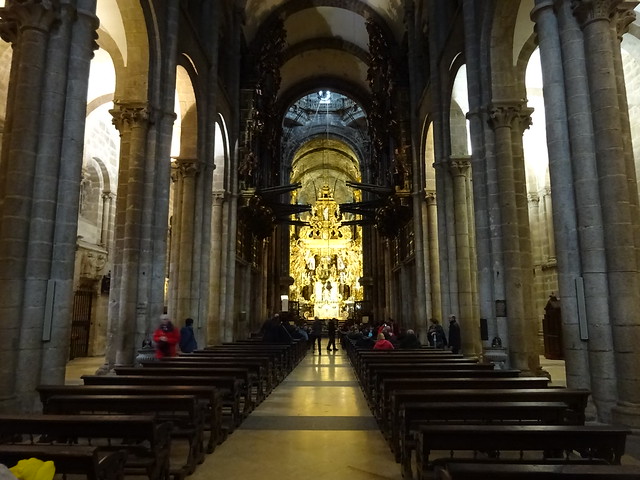What is the Camino de Santiago?
The Camino de Santiago, known in English as “The Way of St. James,” is the name of any of the pilgrimage routes to the shrine of the apostle St. James in the Cathedral of Santiago de Compostela in Galicia in northwestern Spain. The earliest records of visits paid to the shrine dedicated to St. James at Santiago de Compostela date from the 9th century, but it wasn’t until the 12th century that large numbers of pilgrims from abroad were regularly journeying there. The route is now one of UNESCO’s World Heritage Sites.The Camino Francés or French route is the most popular pilgrimage route to the Cathedral of Santiago de Compostela. It runs from St. Jean Pied de Port on the French side of the Pyrenees to Roncesvalles on the Spanish side and on to Santiago de Compostela for a total of 791 kilometers or 490 miles.

The Camino Francés is fed by three major French routes: the Voie de Tours, the Voie de Vezelay, and the Voie du Puy. It is also joined along its route by the Camino Aragones, the Camí de San Jaume, the Camino Primitivo, and the Camino de Levante. Other Spanish routes are the Camino Inglés, the Via de la Plata, the Camino Portugues, and the Camino Norte. This Camino network is similar to a river system with small brooks joining together to make streams, and the streams joining together to make rivers, most of which join together to make the Camino Francés.
Many of those setting out on the Camino de Santiago give a religious or spiritual reason for going. Others find spiritual reasons along the Way as they meet other pilgrims, attend pilgrim masses in churches and monasteries and cathedrals, and see the large infrastructure of buildings provided for pilgrims over many centuries.
Some people travel the Camino on bicycle or on horseback, but the traditional way is to walk. Walking the Camino is not difficult, with most of the stages being fairly flat and on good paths. The main difficulty is that few of us have walked every day for a month or more. You learn more about your feet than you would ever have thought possible! And you also learn a lot about life.
The Cathedral of Santiago de Compostela is a Romanesque structure with later Gothic and Baroque additions. There is a statue of St. James at the altar, and his relics lie beneath the cathedral’s high altar in a silver coffer; they can be viewed from the crypt. In the cathedral’s Capilla del Relicario (Chapel of the Reliquary) is a gold crucifix, dated 874, containing a piece of the true Cross.
The most impressive tradition of this cathedral is the fast swinging thurible, an ornate, 1.6 metre high censer which is the largest in the world. This censer is named Botafumeiro and is used in specific ceremonies. It swings with a speed up to 80 km/h, leaving trails of thick fumes. It is considered that this powerful “air freshener” was used in order to mask the stench from the crowd of pilgrims who entered the cathedral after weeks long, exhausting pilgrimage without washing.


